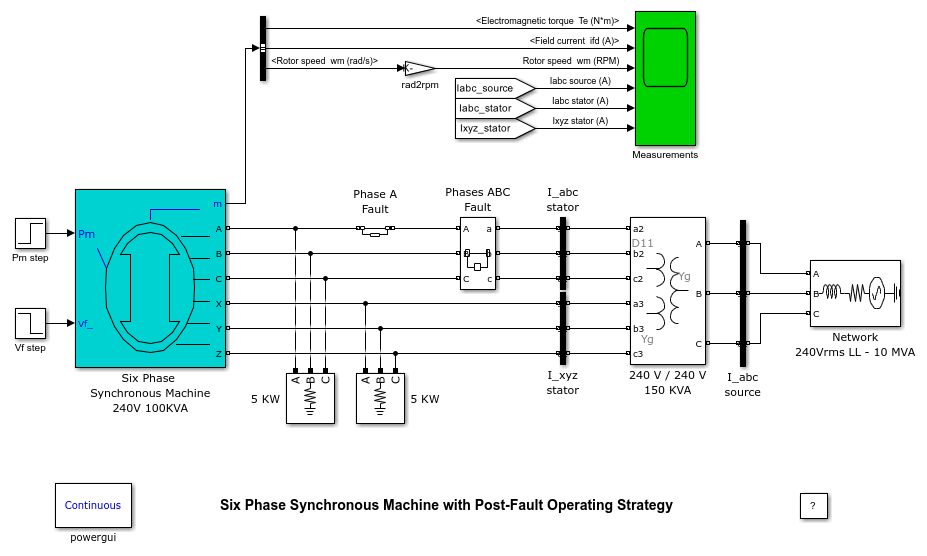Six-Phase Synchronous Machine with Post-Fault Operating Strategy
This example shows the use of a 100 KVA Six-Phase Synchronous Machine under normal and fault operation.
J-F. Doyon and Louis-A. Dessaint (Ecole de Technologie Superieure, Montreal)

Description
A 100KVA, 240V, 1800 RPM six-phase synchronous motor is supplied by a three-windings, three-phase transformer connected to a 240V network with a short-circuit level of 10 MVA. Full load is initially applied to the shaft's machine and the excitation voltage is set to 0.6V, which represents the voltage value viewed from the stator so that the machine can produce its nominal phase current at full load.
Simulation
1. The machine starts under normal operation (all healthy phases).
2. At t = 4 seconds, phase A is disconnected. The Ia and Ib currents become dephased by a 180 degrees value to ensure a sum of currents in the stator equal to zero. Such a behavior creates a lot of ripple on the electromagnetic torque. This ripple is eliminated as soon as the ABC stator is disconnected from the circuit.
3. 50 ms later, the ABC stator is entirely disconnected from the circuit to compensate the phase A loss. Also, the load is reduced to half its nominal value and the excitation voltage Vf is decreased to 0.4V so the remaining XYZ stator keeps a nominal phase current value.
4. The system quickly stabilizes.